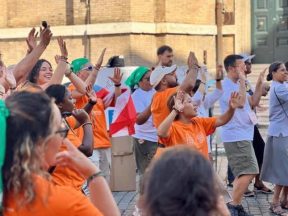The African Dance. The celebration of the life.
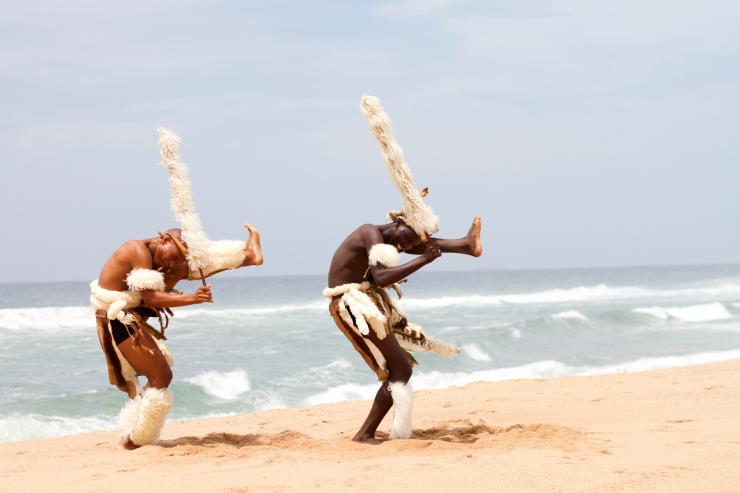
In traditional Africa, dance is more than entertainment. It is a celebration of life. This is why, watching Africans dance can give a clue of both their core values and main economic activities.
It even gives insight into the geography of their land and
the history of their tribe.
Cattle keepers dance jumping. These are men of the spear; they are fighters by nature since they have to defend themselves and their cattle against raiders and predators. It seems as if they jump as high as possible to detect enemies from afar.
Their women folk imitate the domestic animals by fixing something that looks like an animal tail on their skirts or by raising and extending their hands over their heads. These look like horns. The Karimojong and the Bahima in Uganda perform such dances. Farmers and keepers of goats or sheep carry out fertility dances.
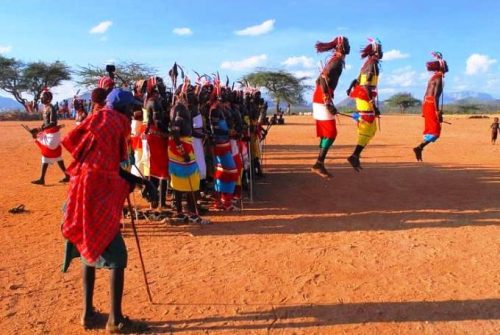
Tanzania. The Maasai. Cattle keepers dance jumping. It seems as if they jump as high as possible to detect enemies from afar. Pixabay
The Bantu and some Nilotics fall under this group. Their dance consists of shaking the waist and the backside. Some of these dances are overtly sexy. They indicate the fertility of people, animals and the land. These dances call for the participation of all. While dancers and the drummers perform, the spectators sing and clap hands. A fisherman’s dance is centred on the chest. You need a good chest to raw loaded boats or canoes without an engine.
Sometimes the imitation of pulling nets is not missing in their dance. This type of dance is sometimes mixed with elements of fertility dances because some fishing communities do agriculture too. People around Lake Kyoga in Uganda and other water bodies dance this way.
Mountain people dance by either stamping hard on the ground or agitating their shoulders. Climbing daily, one has to take a firm grip on the ground and keep bending. These two actions involve especially the feet and the shoulders. Note that mountain people do not carry loads on the head or children on the back; the load is carried on the back and the children on the side, next to the ribs.
The Tswana dance in Southern Africa is a dance of footsteps. This is the dance of hunters. While hunting, especially where one has to run after the animal, it is the legs and the feet that are most active both for the hunter and the hunted; the swifter, the better.
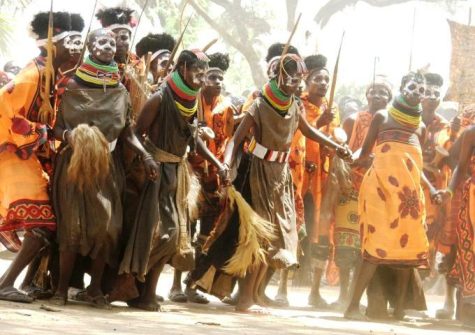
Kenya. Turkana dance. Dancing does not only connect humans to nature, it connects them to the spiritual world too. File swm
People who migrated, fighting their way to the land they now call their own perform war dances. The Bwola of the Acholi in Uganda and the Zulu dance in South Africa are examples of a war dance. Before the creation of multi-tribal countries, such people used to carry out raids on their neighbours. Their survival depended very much on war tactics and the courage of their menfolk. Such dances are warlike and the songs are military. The dancers are grouped in rows.
Rows are lines and lines are joined points with an infinite possibility of continuity. Society lives on despite the presence of the enemies of life. In kingdoms or large chiefdoms, apart from the dances that imitate the main economic activity, there will always be a war dance. Some African dances are cosmic.
The dancers hold tree branches or sticks, put on animal skins and feathers of particular birds and paint themselves with chalk. Whether the dance takes place under the sun or the moon and the stars around a fire, such dances have most of the cosmic elements represented. Nature is called upon to enhance life. Some sicknesses are cured through dances. Therapeutic dances, like the Vimbuza of the Tumbuka in Malawi, are known all over Africa. People dance around the patient in circles until he/she shows signs of recovery. Among the Baganda in Uganda, people get rid of mumps by dancing around the jjirikiti tree!
Funeral dances are common in Africa, especially at the death of prominent elders, chiefs, and kings. This is the celebration of a life well lived and the afterlife of one who is destined to be an ancestor. Africans call upon spirits and divinities while singing and dancing. Therefore, one should not be surprised to see that Africans have introduced dances into Christian liturgy, for African religions are danced-out religions.
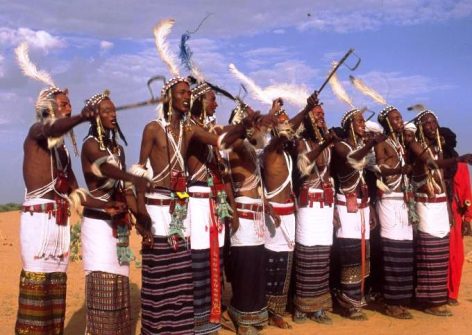
Niger. The Bororo. The Gerewol festival. With painted faces, smiling and with their lips painted black, begin the first moves of a ritual dance.File swm
To dance is to celebrate life and life is lived in common. Many African people dance in circular groups. Therefore, those who dance alone are called witches and wizards. The symbolism of unity is very clear here. A circle is a universal symbol of unity and harmony. It also represents birth, survival, and death. In dance, it is a circle of life where every individual should find his or her place.
It has the dynamism of a constant loop pointing to the continuity and perfection to which every human group aspires.
Dancing does not only connect humans to nature, it connects them to the spiritual world too. Dance enables an encounter with the divine and expresses a relationship that already exists. Sometimes, through possession and the phenomenon of masked dancers, the spiritual world joins the social one in dance. The horizontal dimension where people are united among themselves and the vertical one where people are united with the spiritual world make up what we can call the fullness of life. A dancing community is often a healthy community. (Open Photo: Zulu dancers on beach. 123rf)
Edward Kanyike



